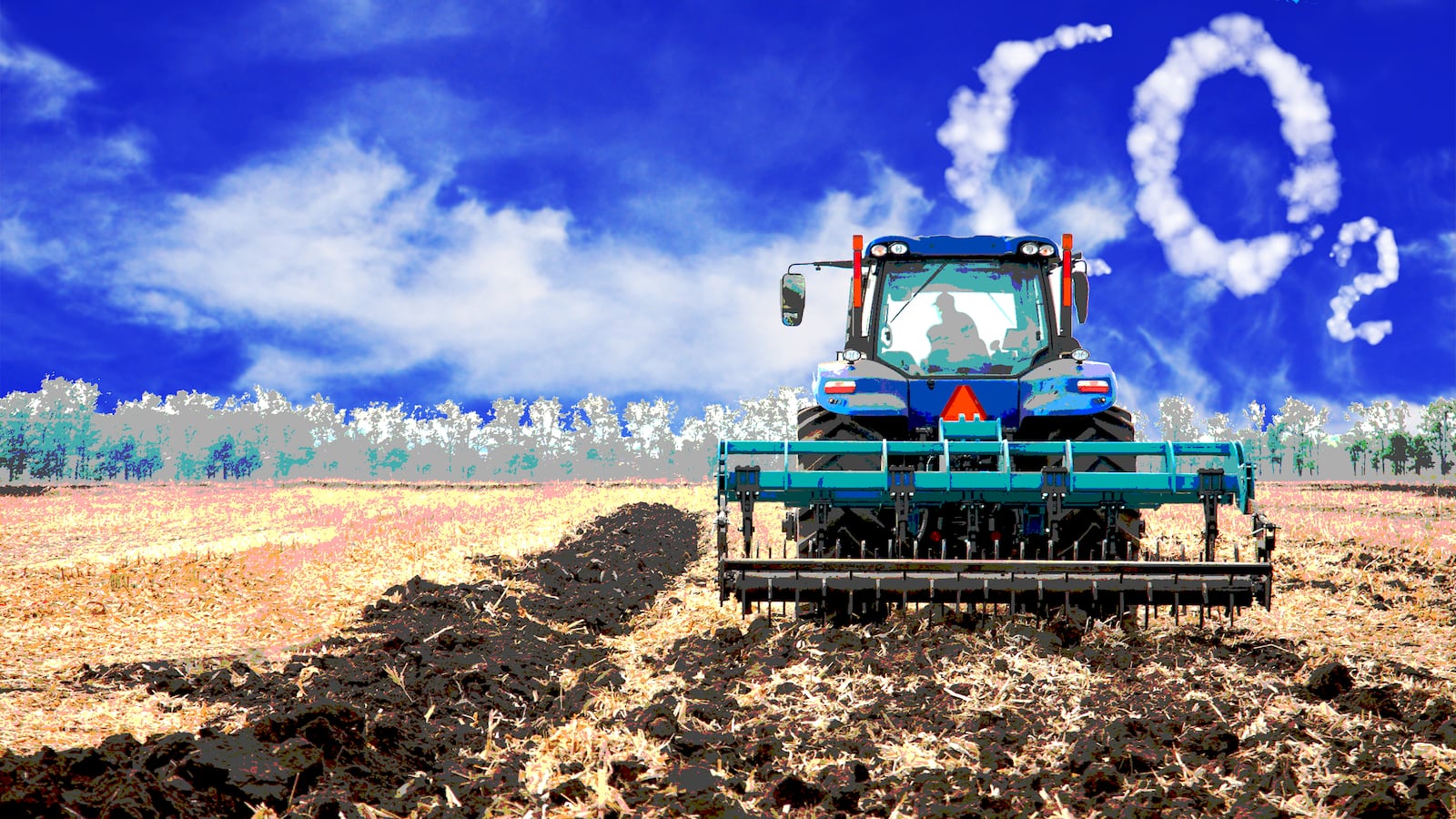What if the carbon dioxide that leads to global warming could be captured, stored, and used for farming?
It’s a radical idea that some scientists think could help mitigate the warming of the planet and limit the disturbances these gases could create on our global climate and natural systems.
To understand carbon farming, it’s important to understand carbon sequestration, where the goal is to remove carbon dioxide from the atmosphere or prevent its emission into the atmosphere after industrial production, and storing it away in such a matter than it can’t be used as a greenhouse gas. There’s a lot of ways this could be accomplished, but the big takeaway is that carbon sequestration is a pretty audacious sort of strategy for combating climate change—and like most of audacious technologies, requires a lot of money and planning to really implement.
Few companies and governments around the world have been willing to pony up such resources.
Carbon farming is a more natural spin on carbon sequestration. “Carbon farming is a funny title,” says David Burton, a soil scientist and professor at Dalhousie University in Nova Scotia, Canada. “It’s really about implementing a series of conservation practices in our traditional agriculture system that enhances storing organic matter— i.e. storing carbon in the soil itself.”
Over one-third of Earth’s land is considered agricultural, which means there’s a giant potential for putting a dent into carbon dioxide emissions. Coincidentally, one-third of the world’s greenhouse gas emissions come from agriculture. “We have to have carbon removal as part of our climate pathway,” says Torri Estrada, the executive director of the Carbon Cycle Institute (CCI), a California nonprofit that advocates for carbon farming, with partners in 30 counties. “And agriculture and working lands have to be part of that solution.”
Those carbon farming practices are myriad—36 different practices exist so far, according to Estrada—but they still allow us to produce food and fiber from our agriculture productions.
Still, carbon farming isn’t going to pop up overnight.
The first kind of carbon farming is soil management, to reduce soil disturbance. “One of the things that we do when we till or plow the soil is by distributing the soil, we make the carbon that’s already there more accessible to microorganisms,” Burton told The Daily Beast. “That causes them to eat the carbon, and release carbon dioxide. Avoiding soil disturbance would prevent that organic matter from being decomposed to that same degree and cause it to get dumped out into the atmosphere.” Farming practices that are no-till, or at least reduced-tillage, could go a long way to disturb the soil less.
The other major category of carbon farming encompasses practices that increase the time in which plants are actively growing in the soil. This could include reforesting and revegetating lands that are no longer in use, which Estrada says probably possesses the biggest potential for carbon sequestration. This might also mean coming up with innovative strategies the turn agricultural lands into year-round spaces for crops.
“Oftentimes we use annual cropping systems like corn and soybeans where we plant the crop in the spring, grow it for a brief period of time, harvest it in the fall, and otherwise the soil is left there,” Burton said. Research suggests, however, using cover crops that can be planted after harvest, “so we have a longer period of active crop growth.”
Another approach is to turn away from annual cropping systems and move to perennial crop systems, where the plants grow from year to year, with harvests occurring every year. “By not having a period where the soil is just left there, the plants are still growing, the roots are still growing and exuding soil organic matter, and that just stores more carbon into the soil,” Burton said.
Initially, it might seem like carbon farming is really just a rewiring of older techniques and agricultural fundamentals, but there are emerging technologies and tools that are making carbon farming easier to implement. Scientists are looking into ways into identifying and breeding crops—perhaps through genetic engineering—such that they have root systems that are more capable of creating organic soil matter, or can spend more longer times in the soil between seeding and harvest. No-till agriculture has become more popular in the ensuing decades, but newer technologies are making it easier to implement, such as direct-seed tools.
Estrada emphasizes that the great thing about carbon farming is that it’s malleable and adjustable to the farmer’s needs and preferences. “We’re not telling farmers there’s only this one thing you can do,” he says. “There are multiple lines of opportunity. Anybody can start from anywhere, and there’s a portfolio of practices that can make sense for them.”
Additionally, soil organic matter can basically help to future-proof agricultural lands and make farming even more sustainable and environmentally healthy in many other ways. More carbon in the soil can bolster the soil and make it more resistant to erosion. It fosters a more diverse microbial population in the soil and increases fertility in the soil, which in turn leads to better crops. Burton is encouraged by what carbon farming can do in terms of climate change, but he’s particularly bullish about its effects on soil health, and providing environmental goods and services.
Even so, there’s quite a bit skepticism as to whether carbon farming can actually create a significant, worthwhile impact on greenhouse gas remediation if we can’t scale upward. “But it’s not because of farmers,” Estrada said. “I talk to farmers all the time and they get why this is a good thing. Their questions are more of, ‘How do I do it?’”
Unsurprisingly, the biggest obstacle to scaling upward is cost. “Ultimately, there’s no incentive for these farmers to implement these practices if the costs are still too high,” Estrada pointed out. “A lot of this is economic. The technologies and strategies have been around for a while, but the agricultural industry just has not incentivized any of these methods.”
The federal government, through the Environmental Quality Incentives Program (EQIP), can cover up to 50 percent of the costs, with some state governments also contributing funding as well. Estrada and his team are pushing to find ways to push that reimbursement number closer to 75 percent.
Another solution that the CCI wants to see come to fruition is in seeing the U.S. Department of Agriculture or other parties actually providing farmers with personnel that can help farmers implement these practices and provide direct education on what works best. That would be particularly useful in allowing agencies to track how much carbon is actually being built up in the soil and making a verifiable dent in climate change. “You actually need boots on the ground that can help support making these things a reality,” Estrada said.
But progress is being made, even if its slower than we might hope. Farmers have access to more tools and resources to help them take carbon farming from paper to soil, and increased alarms about climate change are causing producers—even conservative ones—to be more and more excited about making a difference.






